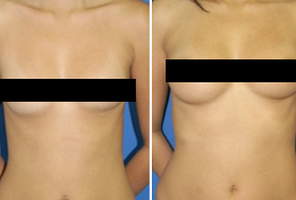A Mini Facelift can provide improvement to the aesthetics of the aging face by tightening the cheeks, jawline and neck. This procedure has several names, including the S-lift, the Limited Incision Facelift, Mini Lift, Quick Lift, Lifestyle Lift, and Weekend Facelift.
With fewer and smaller surgical incisions, a Mini Facelift is far less extensive than a traditional facelift. However, the mini facelift is a limited technique that does not address the jowl area or neck like a full facelift does. As such, many surgeons recommend the Mini Facelift for younger patients who have minimal skin laxity and relatively minor signs of aging.
About the Mini Facelift Procedure
The Mini Facelift surgical procedure takes on average between one and two hours to perform. It is most often done using light oral anesthesia. The goal of the surgery is to reposition the areas of the face that have started to show signs of aging. At the same time, the surgeon also attempts to achieve these changes through an incision that is about half the length of the incision in a traditional facelift. For the most part, incisions behind the ears are eliminated.
Each individual surgeon plans the surgery according to their personal preference. Some will work first on one side of the face before moving to the other side. Other surgeons will work on a particular area on both sides before moving to the next. Decisions about location of incisions and the order in which areas are treated are based on preferred technique and the structure of the patient’s face.
In all cases, the surgeon initially separates the skin from the fat, tissue and muscle below. Oftentimes, fat may be removed by suctioning or trimming to improve the contour of the neck and chin. Next, the underlying muscle, tissue, and fascia are tightened, the skin is pulled back across the face, and any excess is trimmed away. The layers of tissue and skin are then secured using meticulously placed stitches. Around the scalp, metal clips may be used instead of stitches. As the skin is closed, a small, thin drain tube may be inserted behind the ear to drain away any blood or fluid that might collect there. It is temporary and is normally removed within a few days.
Because a Mini Facelift is a less extensive surgery than a traditional facelift, there is typically less cost for the patient. While the smaller investment and less visible scarring may be appealing, the improvements and results that can be made with this type of surgery are more modest and do not last as long as the traditional facelift.
Results
While the Mini Facelift procedure has its limitations (it does not provide the dramatic results of a traditional facelift, nor does it stop the aging process), it does reduce minor sagging around the cheeks creating a more youthful appearance. You can view some great before and after pictures of the mini facelift procedure here.
Ideal Candidates
The ideal candidate for the Mini Facelift is younger than the traditional facelift candidate. He or she has slight to moderate signs of aging, low skin laxity and has little “neck banding.” This means that patients with pronounced sagging of the neck and prominent jowls are not appropriate candidates and would be better suited for a traditional facelift or neck lift.
After the Procedure
A light dressing will be applied in the operating room. It should be worn for the first night. If you have a drain, it will be removed one or two days after surgery. Your sutures (stitches) will be removed a week after the procedure, unless you have dissolvable sutures which will disappear on their own. Most Mini Facelift patients are able to return to normal activity levels after a couple of days, as opposed to a two to three week recovery time for the traditional facelift.
Potential Risks
All surgical procedures carry the risk of complications. When the Mini Facelift is performed by a board certified plastic surgeon, these risks are minimized and complications are rare and usually minor. Complications that may occur include injury to the nerves of the face, infection, bruising, and reaction to the anesthetic. Smokers have a higher risk of complications related to poor skin healing.
Conclusion
Depending on your goals for your face and its aesthetics, a Mini Facelift may be the appropriate procedure for you. It could be the right tool to keep you looking vibrant and youthful for the next 5 to 10 years, and can potentially postpone any need for a traditional facelift. However, because the Mini Facelift provides a less significant outcome compared to traditional facelifts it’s important to consult a skilled plastic surgeon to determine if the procedure will meet all your needs. As with any plastic surgery procedure, the qualifications and experience of the surgeon are of paramount importance.
About the Author
Dr. Cameron Craven is board certified by the American Board of Plastic Surgery. He completed a 6 year integrated residency in Plastic and Reconstructive Surgery at Baylor College of Medicine, one of the top 15 medical schools in the United States.

